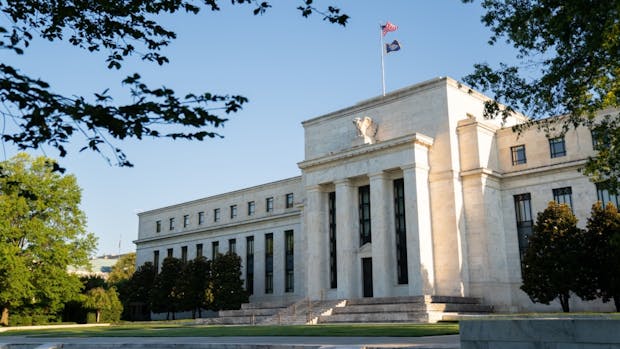US Fed Ripple Crashes Stocks

US Fed Ripple Crashes Stocks
many saw it coming, but the timing was a surprise. on 26 January, the US Federal Reserve issued a statement that said it will begin liquidity crunching measures through its tapering programme from March 2022. but foreign investors had started exiting their equity positions in anticipation, much before the decision was announced. and as a result, Indian markets crashed.
India’s stock market investors lost a whopping Rs 9.15 lakh crore on January 24 alone, as the Sensex and Nifty crashed. this was on the back of the foreign portfolio investors pulling out a net of Rs 3,751 crore from Indian equities on that date, taking the net outflows over nine trading sessions to Rs 15,817 crore. after Indian markets opened following the Fed announcement, there was a loss of another Rs 4 lakh crore.
just between January 17 and 27, investors were left poorer by Rs 21 lakh crore as share prices slipped continuously. the US Federal Reserve has said that from February, the Committee will increase its holdings of treasury securities by at least $20 billion per month. India’s Reserve Bank of India (RBI) and the monetary policy committee will take cues from the commentary.
the market dynamics
since December 2021, foreign investors had started selling equities in anticipation of a rate hike and the US Fed tapering. the sale quantum substantially increased from the second week of January 2022 as the Fed meeting date came closer.
with speculation about the rate hikes beginning as early as March, the benchmark Sensex crashed by 2,000 points intra-day on January 24. similarly, the Nifty fell by 468 points. technology stocks, including Nykaa, Paytm, PB Fintech, and Zomato, were among the worst-hit with a global selloff in the sector.
investors are also waiting for the economic outlook from the upcoming Union Budget 2022 on February 1 as also the RBI policy stance.
learning from the past
volatility is not new for India’s stock market. be it the global financial crisis of 2008, China’s slowdown worries of 2015, or the pandemic shocker of 2020, the country’s equities have seen their share of downs. however, the markets reacted promptly every single time.
the 2008 crash of 1,408 points took four trading sessions to recover the losses. in 2015, when the Sensex fell 1,624 points on August 24, it took four days to wipe off the losses.
the worst-ever situation was witnessed in 2020 when the dual effects of a global pandemic and sliding economy led to a free fall in BSE and NSE. the biggest fall was seen on March 23, 2020, when the Sensex plunged 3,934 points and hit the lower circuit limit for the first time in its history.
as the cases increased and lockdowns were imposed, there was complete chaos in the equity markets. discretionary spending-related sectors such as real estate, travel, hospitality, and retail suffered the biggest hit.
the effects of the pandemic on the market slowly started to go down by the end of 2020. the smooth transition of power to Joe Biden in the United States marked the final green signal for the Sensex to touch 50,000 for the first time ever.
the positives continued throughout 2021 and in September, the Sensex crossed 60,000 touching record highs.
bouncing back to green
market surveys have stated that the stock market will hit new milestones in 2022, as soon as the selloff pressures ease. once foreign investors start pumping money back into stocks a revival is expected.
the targets for GDP growth and fiscal deficit to be announced in the budget will hold the key to how the markets react. in addition, the mega Life Insurance Corporation of India (LIC) initial public offering is also expected to bring back the lost FII flows into the Indian stock market.
for the short term, the major Asian markets could stay choppy, absorbing the key messages of the US Fed decisions. the US Fed has said that it will be open to adjusting the stance of monetary policy if newer risks emerge. this has come as a respite because an immediate interest rate increase could have increased fluctuations for the next few weeks.
so, is it time to make quick exits or stay put? equity experts have already cautioned about a 15-20% correction but have advised investors to hold on to their positions for the long term.
the moment the fresh capital expenditure cycle kicks in and new projects are made operational in FY23, the tide will slowly start to turn. rather than making hasty calls, it will be critical to keep a close watch and tweak allocations accordingly. for the risk-averse who don’t want a direct exposure, the mutual fund cushion already exists.



